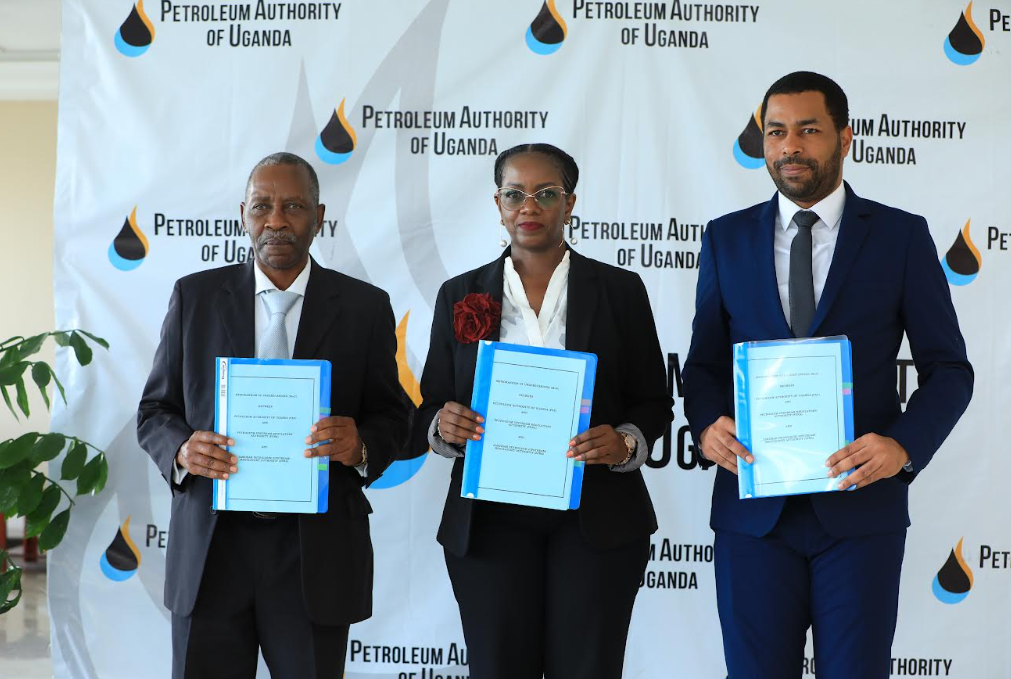In a region often fragmented by divergent policies and resource nationalism, the recent signing of a tripartite Memorandum of Understanding (MoU) between Uganda, Tanzania, and Zanzibar marks a rare and welcome display of unity.
Spearheaded by the Petroleum Authority of Uganda (PAU) and its counterparts—the Petroleum Upstream Regulatory Authority (PURA) of Tanzania and the Zanzibar Petroleum Regulatory Authority (ZPRA)—this agreement signifies more than diplomatic cooperation. It represents a strategic step toward regional integration and resilience in the petroleum sector.
At the forefront of this initiative is Ms. Lynda Biribonwa, Chairperson of the PAU Board, whose leadership is proving instrumental in shaping East Africa’s trajectory toward collaborative energy governance.
Her rallying call— “Together, let us chart a transformative path forward for the petroleum industry in East Africa”—captured not only the tone of the event in Entebbe but also the broader momentum this agreement could unleash.
Despite East Africa’s abundant hydrocarbon resources, the region has long lacked a coordinated development strategy. Regulatory bodies have traditionally operated in isolation—developing policies, licensing acreage, and courting investors independently. The result has been fragmented growth, duplicated efforts, and missed opportunities for regional capacity-building.
This MoU aims to change that. It outlines cooperation in key areas such as:
- Petroleum resource management
- Cost monitoring and transparency
- Health, safety, and environmental standards
- National content promotion
- Capacity building and knowledge exchange
By aligning priorities and sharing best practices, Uganda, Tanzania, and Zanzibar are fostering the regulatory cohesion that both investors and the global energy transition demand.
Beyond institutional collaboration, this moment highlights something more profound: the emergence of Lynda Biribonwa as a key figure in East African energy diplomacy.
In a sector still largely dominated by men, her leadership is not only symbolic but deeply substantive. Her focus on leveraging existing expertise and ensuring mutual benefit reflects a level of diplomatic finesse often lacking in resource politics. She brings pragmatism over populism and acknowledges that no single country can navigate the oil and gas landscape alone. In doing so, she is helping to reshape East Africa’s image—from one of isolated ambitions to a bloc united by technical cooperation and shared goals.
The Swahili proverb invoked during the signing, “Umoja ni nguvu” (“Unity is strength”), could not be more apt. With Uganda’s Albertine Graben discoveries, Zanzibar’s offshore potential, and Tanzania’s LNG prospects, the region holds immense promise. But promise alone is not a plan.
The real challenge lies in converting individual progress into regional prosperity. Through data sharing, harmonized safety standards, and joint efforts in local content development, the three regulators are laying the groundwork for a pan-East African petroleum strategy. This could eventually grow into joint infrastructure projects, coordinated investment promotion, and cross-border energy trade.
For the MoU to succeed, it must go beyond intention. It should lead to tangible outcomes—joint training programs for regulators and engineers, standardized health and safety protocols, consistent data-sharing forums, and collaborative investor engagement.
PURA’s Executive Director, Charles J. Sangweni, expressed optimism that the partnership will soon extend to Kenya and other East African Community (EAC) members. Expanding this framework would grant East Africa a unified voice in global energy discussions.
The significance of this agreement extends beyond the oil and gas sector. It underscores a growing understanding that regional integration is no longer optional—it is essential. Whether it’s power pooling, pipeline development, or emissions management, East African nations stand to gain far more through collaboration than competition.
This agreement may not dominate global headlines, but it will shape the energy future that matters most for East Africa: sustainable resource development, improved regulatory standards, and a shared vision for growth.
Biribonwa and her counterparts have laid down a roadmap. It is now up to East African governments, the private sector, and international partners to turn that roadmap into reality—and into shared success.


